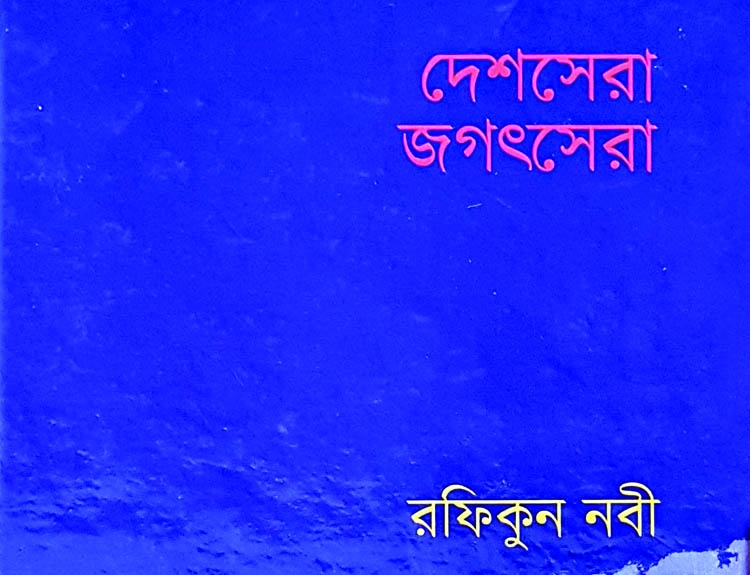Life tales of the great artists -The Asian Age

Shyamoli Das explores the deeper thoughts of life depicted by the writer
Deshsera Jagatsera by Rafiqun Nabi, published in 2016, is about the description of the life and times of a number of great artists. The book discusses their noteworthy works. Different tales from the lives of Rabindranath Tagore, Joynul Abedin, Kamrul Hassan, Kaium Chowdhury, Picasso and many more are analyzed from the author's viewpoint.
At first, let me write a few lines on Rabindranath Tagore's deep passion for paintings. The book informs us Tagore always thought painting is connected with the life of human beings. He opined art helps one flourish culturally and socially. That is why he opened Arts faculty at Shantiniketon. Overall Tagore searched the deeper meaning of life through his paintings. Rafiqun Nabi comments since Tagore's paintings indicate our life-stories these are still very modern.
The author puts special emphasis on the life and works of Joynul Abedin. He says Abedin was a very down-to-earth artist of our country. His prominence never snatched his simplicity. He truly believed in plain living and high thinking. He had a tremendous oratory power. His famous paintings of 1943 gained worldwide popularity.
Here the writer reminiscences the days of Kamrul Hassan. When Rafiqun Nabi was in class 9 he met Hassan. He had a very strong physique. Likewise he had immense mental strength. Through his works the rebellious nature of Kamrul Hassan is foregrounded. Kamrul fought the excessive influences of western culture by his pen and color. He had a deep political consciousness which is reflected in his paintings.
Kaium Chowdhury is one of the legendary artists. Patriotism was the main source of his creative works. He always prioritized the people of Bangladesh. His works reflect it. Most of his famous works portray the life of the rural people and landscapes. In fact, Kaium Chowdhury was greatly influenced by Joynul Abedin. He brilliantly represented Bangladesh through his paintings. Moreover, his wife, Tahera Khanam was a good artist too.
The chapter on Pablo Picasso is very insightful. Picasso started his career amid immense financial crisis. The life of the working class people drew his special attention. He painted pictures of the suppressed and neglected people of the society. Most of the people thought Picasso was a unsocial. In fact, he believed in Cubism. He was harshly criticized by his contemporaries. He highlighted the real happenings of society in his paintings.
Kaium Chowdhury brilliantly brings into focus the life stories of Van Gogh. Gogh was really a majestic painter. His exclusiveness made him great. His own pattern and style gave him worldwide fame. He suffered much throughout his life. As a result he always tried to portray happiness through his paintings. He was completely a modern painter. His paintings reflect all the essential features of modernism.
Last but not least, I would like to say this book would help readers enrich their knowledge in many ways. Alongside, this book can be considered as one of the best collections on great personalities at home and abroad. In a word, it has recorded some unforgettable moments of the movements of art, culture and literature. It can be said without any doubt that the diction Rafiqun Nabi used is lucid and readers friendly. His intimate conversations with the great artists take us to those days which shaped our history and consciousness. I hope the book would get a large readership.
The reviewer is a regular contributor to
The Asian Age
